It would be fair to say that this winter our weather has been all over the place. We’ve gone from one deluge-of-a-rainstorm after another, in November and December, to an almost total lack of rain since the New Year.
Cold overnight temperatures in the mid-20s persisted throughout January, and most of February, but then just to add to the confusion, some afternoons we’ve been climbing up into the low-to-mid 70s. If nothing else, this winter has emphasized the importance of dressing in layers!
The Native Gardens
With night after night of freezing temperatures, it eventually all became a bit too much for some of our native sages and buckwheats. On the surface it doesn’t look good for our St. Catherine’s Lace buckwheat (Eriogonum giganteum).
However, a slight scratch at the stem with a fingernail has shown that St. Catherine is not dead yet. We’re hopeful that by spring we’ll see some new growth.
The native Salvia ‘Allen Chickering’ is a bit of a mixed bag at the moment. Those plants closest to the house, or other structures, or high up on the slope, seem to be faring better. Some are even pushing new growth.
However, a few of the plants in more exposed locations were definitely damaged by frost.
The most hard hit though was this once magnificent Salvia sonomensis ‘Fremont’s Carpet’. This is how it looked in November when I was giving this plant rave reviews…
This morning, sadly, it’s not looking quite so lively.
For now though, as with St. Catherine’s Lace, I’m choosing to just leave it alone, and once the weather is more consistently above freezing at night we’ll see what sprouts before deciding to cut it back too hard.
On a cheerier note, the Manzanitas are thriving. Last year Arctostaphylos manzanita ‘Dr. Hurd’ didn’t bloom, and by mid-summer had succumbed to what appeared to be a fungal disease. I was determined to grow it though, so I replaced it with a new specimen. I’m happy to say its successor is not only much healthier, it’s actually in bloom!
My favorite though is Arctostaphylos pajaroensis.
It’s still a young plant, but seems to be settling in on the slope above the house very well. This is a rare, locally native, species, and it took me some time to locate a good specimen, so I’m especially excited to see it blooming this winter.
A number of Coyote Brush (Baccharis pilularis) volunteers are popping up on the slope after last summer’s prolific bloom and seed set. Although the bloom period is long since over, the mature plants on the slope are now mostly festooned with bits of lace lichen (Ramalina menziesii) that’s fallen from the oaks above.
Our native woodland rose, Rosa gymnocarpa, is starting to show signs of life as the leaf buds begin to swell.
Surprisingly some of the Eriophyllum confertiflorum has decided to start blooming, despite the chilly weather.
Even our daffodils aren’t quite blooming yet, although they’re close!
The Orchard
We seem to have had much more winter chill this season, than last, which in our mild climate is a good thing for the fruit trees. As a result we’re quite hopeful, if the weather cooperates through the bloom season, that we’ll have some good flower and fruit set this year. Nothing, as yet, is blooming in the orchard. However, I suspect the first blooms on the ‘Flavor Delight’ Aprium will burst forth by the end of this week.
The plums and pluots won’t be far behind.
The apples and pears though are still very much dormant, as is the Stella cherry, so it will be a while before the rest of the orchard catches up.
The recently relocated strawberries though are already starting to push lush new growth, and seem to be very happy in their new location.
The Kitchen Garden
Due to a vole explosion late last summer, to remove temptation, we didn’t overwinter any peas, favas, or carrots this season. So far it seems to be paying off, as the voles, at least for now, have vacated the kitchen garden. That doesn’t mean the garden is barren though. We still have a bounty of Brassicas!
Kale is king in the garden this winter, and perfectly capable of tolerating the erratic weather that mother Nature is throwing at it this season. Last winter I woefully under-planted kale in the kitchen garden, but not this year. We have FOUR full beds of it this winter! You can’t have too much kale, can you?
The mustards are also proving their worth in the winter garden this season. In November, as I was reluctantly pulling out the pepper and tomato plants, I replaced them with an assortment of mustards. We decided to try three new (to us) varieties.
The Tendergreen mustard was disappointing, primarily because the minute we had a warm and sunny afternoon, it bolted. Not that the Syrphid Flies mind, but we would have preferred more robust leafy growth.
‘Garnet Giant’ mustard, however, is performing beautifully well. The plants are large, and robust, and the color is absolutely stunning amid the wash of green in the winter garden. It also seems to be fairly bolt resistant.
‘Southern Giant’ mustard has proven to be a fabulous winter garden addition as well.
This variety has produced some massive, and tender, leaves with beautiful ruffled edges, but most importantly it is proving to be the most bolt resistant of the three mustards we planted in the fall. Both ‘Garnet Giant’ and ‘Southern Giant’ are likely to become regulars in our future winter gardens.
Also doing well in the winter garden is our very dependable, and perennial, red-veined sorrel that was planted last spring.
While the voles are away, I’m chancing sneaking in a crop of snap peas, which I’ve sown in the greenhouse, along with a number of other spring starts.
The tomato seedlings will soon be large enough to start grafting.
The ‘Golden’ and ‘Bull’s Blood’ beet seedlings were transplanted outside last week.
Celery ‘Tendercrisp’ seedlings were potted up into larger pots in the greenhouse, and will find their way into the garden soon.
An assortment of greens, including Green Oakleaf, Rouge d’Hiver, and Forellenschluss lettuce, along with Mizuna, and Tatsoi were planted out last week, under the protection of row covers while the frost continues.
The herb garden is starting to stir, despite the cold. We’re happy to see the Chervil pushing new growth.
The Greek oregano, despite the cold, is pushing lots of new growth.
The bees have been very active on warm afternoons, and we’ve noticed them sipping the dew that accumulates on the row covers.
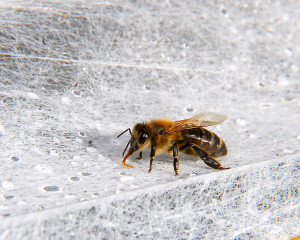
We have to be careful when pulling back the row covers, not to trap the bees that are stealing water from the surface
No doubt the bees are also grateful that the prostrate rosemary is in full bloom at the moment too.
Although there’s not a lot going on in the gardens yet, I do have to keep reminding myself that it’s only mid-late February.
This time of year it should be raining, and too muddy to work outside. However, this is the second year in a row that we’ve been able to embark on sizable outdoor projects in mid-winter. Last year of course it was the barn that we scrambled to build before the goats arrived. This winter we’ve started on another hefty goat-related project in mid-winter, taking advantage of the fabulous weather, by starting to fence in the new designated goat pasture/play area.
More on that project, assuming the weather holds, soon…

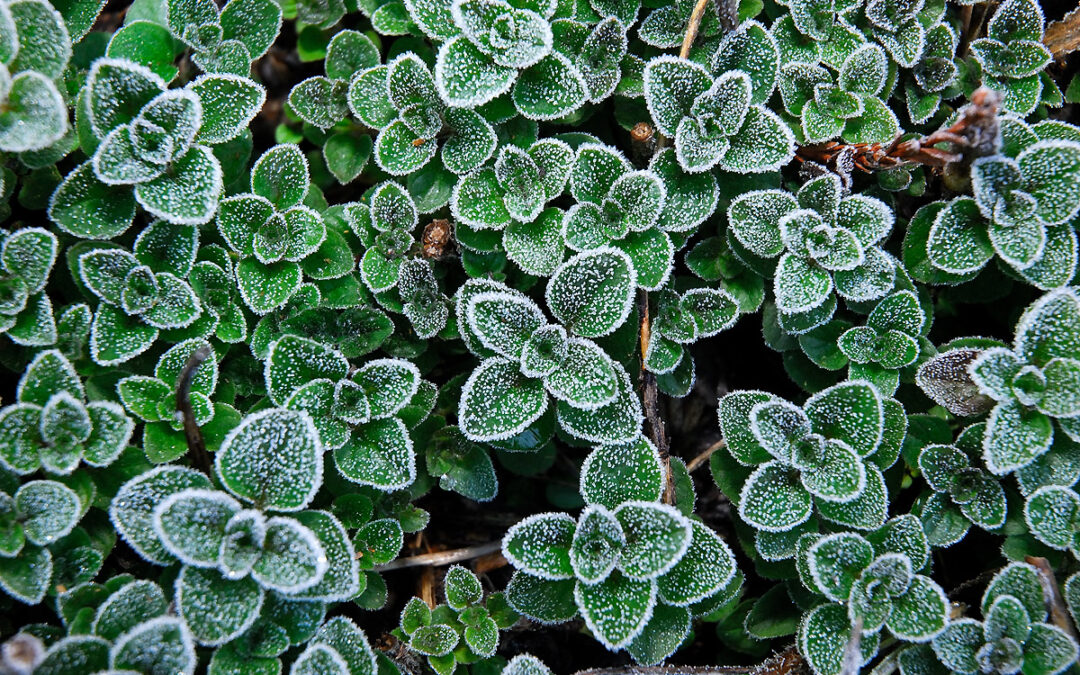
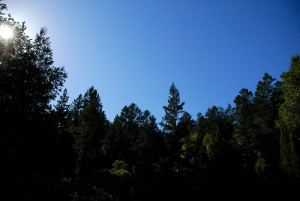
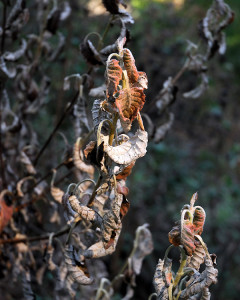
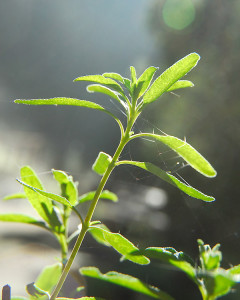
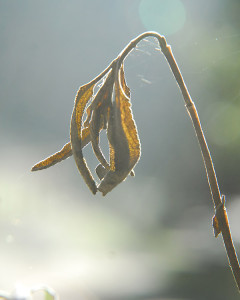
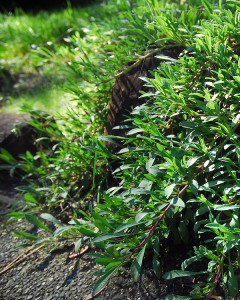
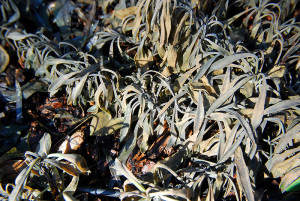
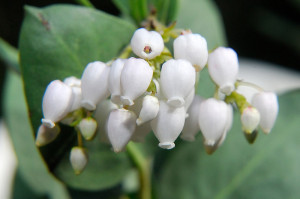
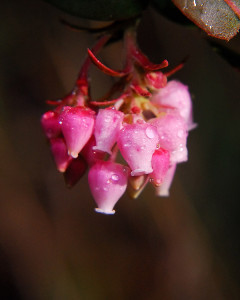
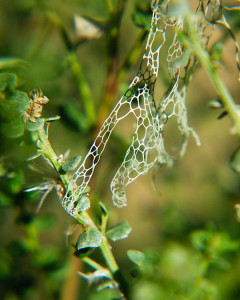
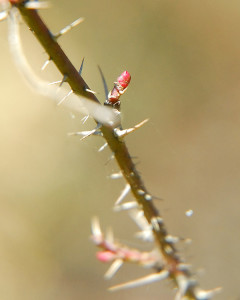
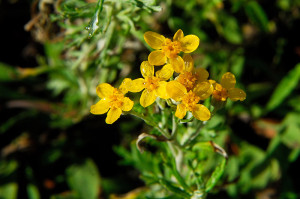
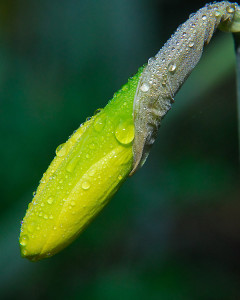
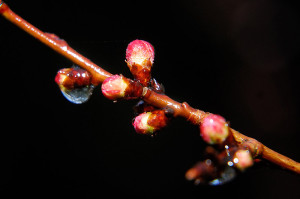
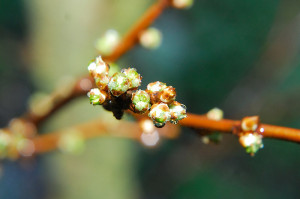

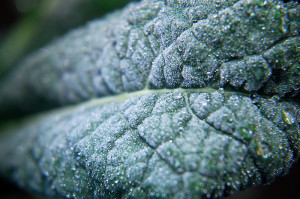
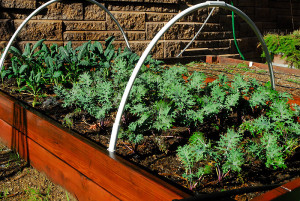
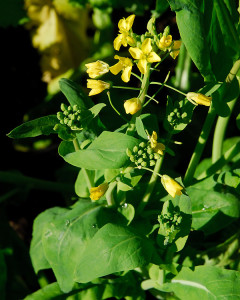
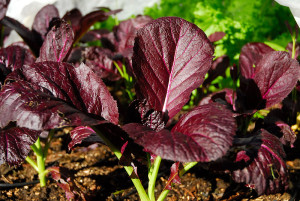

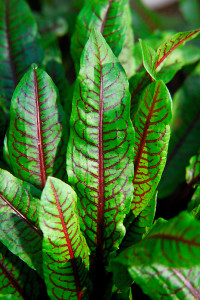
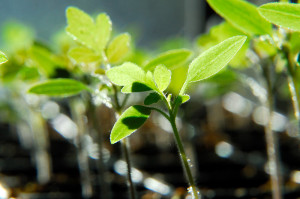
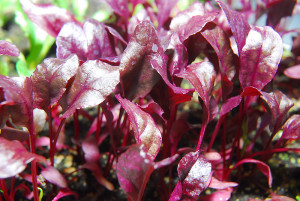
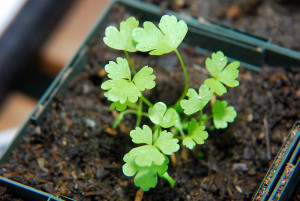
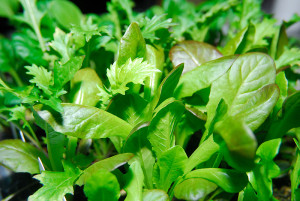
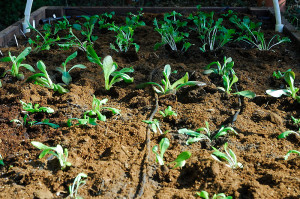
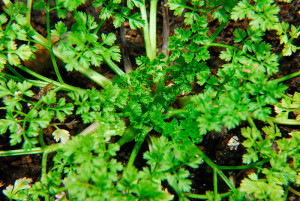
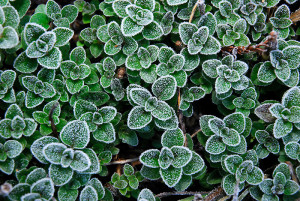
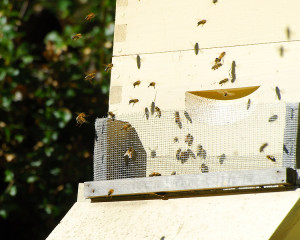
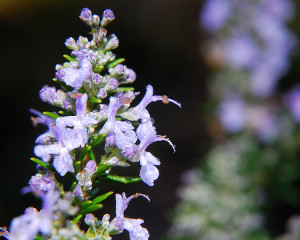

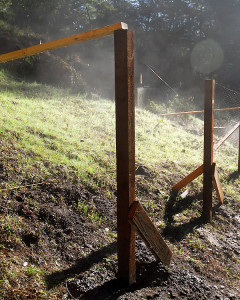







Great update! I imagine you’ll have lots of progress due to the greenhouse this year. Had to enlarge the Red-Veined Sorrel….gorgeous!
Isn’t the sorrel stunning? I’ve been growing it here for about four years. It’s easy to sow from seed, and most of the time we just trim off the leaves we want for a salad or soup, and leave the plant to continue to grow. It’s perennial, and seems to have no trouble overwintering here. I wish everything was this easy to grow!
Wow Clare so much going on…I have carrots in grow bags to keep the voles at bay. They have already done lots of damage to the gardens that are under snow. I saw grafted tomatoes on sale and ordered a few to see how they do in my veg garden this year after seeing your post last year.
Grafted tomatoes can be a little pricey, but having done it ourselves last year, I understand why. There’s a lot more labor involved, and rootstock seeds aren’t cheap. However, for us last year, it was definitely worth it. I’m not sure how resistant the grafted tomatoes will be specifically to blight, but I hope they perform better for you this season!
Our weather has been wacky like that, too. I’m hoping it will settle down and stay warm (but not get hot!). I hope most of your plants spring back to life. It always amazes me when new growth begins on a plant that I am not sure is dead or alive.
That’s my fear, that we’ll go from this frozen nights to a run of ridiculously warm weather. Things are already pretty dry as we’re behind on rain. Of course, the opposite could happen too, and rains could return with a vengeance. It certainly keeps us on our toes 😛
I am trying to be patient with the frost damaged plants, as I’ve been surprised before at how much they can bounce back!
There is a lot going on in your garden, and It sounds like you are working right through the winter. I think your goats will enjoy their new play field! We have had a much wetter winter than you, but dressing in layers is essential here, too. I hope we get some more cold temps, so the gnats won’t be so bad this summer. Otherwise, I am ready for spring, and most of the plants are beginning to show signs of life.
That’s been the trouble the last two winters, the weather has been so nice that we’ve had no down time. On the up side though, we’ve been getting a lot done!
I’m ready for spring too…after we get just a tad more rain 😉
My goodness but you’ve had some low temps! Lowest it’s been here of late is 33, on the shady side of the house – must have been colder farther out though cos this morning we had a good frost. Generally no lower than 36. But day time, in the sixties mostly, not seventies. The clarkia seedlings got through the frost OK! But gosh I’m so sorry for your lovely salvia! As far as the Eriogonum giganteum, I took all of mine out this year- it was just too far gone. I guess it’s fairly short lived. Or maybe only because it was on the fence and my neighbor irrigates quite a bit. I’m enjoying your kitchen garden photos etc – next year I’ll want to start some raised beds. And I agree about this weather – unseasonably dry indeed – but great for getting projects done!
We’ve had a number of mornings between 26-28F, and this morning it was 31. What’s been surprising is the number of consecutive mornings below freezing here. So much for the moderating influence of the ocean 😉 A lot of our plants can take an occasional frost, but it’s been persistent since the new year. We’ve only had a couple of days in the low 70s, and last Friday at 75 was amazing! That’s the thing with this valley, it seems to average a good 10 degrees colder than in town, but also gets a lot warmer too when the sun is out! The good news is, maybe we’ll get our fence done next weekend with all this dry weather.
Wow! So much activity in your garden – so exciting! I love the buds and the Lace Lichen – so interesting! This is the best part of gardening – the brand new life that happens.
I love the lace lichen too. It almost didn’t look real the first time I saw it. We have one hillside where the trees are just draped in it this time of year. I agree, this time of year it’s wonderful to see the gardens coming back to life 🙂
It sound like our weather is opposite yours, we had a dry fall and early winter, and 2013 so far has been wet. Thankfully the moisture has been rain and not snow here. And while you have rosemary blooming, we have a few super early daffodils in bloom. Our ladies have been out flying a few days, but I don’t know what they might be finding in the way of pollen.
I hope the voles stay away for you. And no, I don’t think you can have too much kale!
That is odd. Between the two of us we have a perfect weather, although neither of us seems to have an ideal at the moment.
I’ve been amazed how much pollen the bees are bringing in. There’s not much in bloom at the moment. Manzanita, some of the Ceanothus is just starting, and the rosemary. With as much pollen as I’m seeing going into the hives at the moment though, I predict it may be a bumper swarm season here! As soon as we get a few degrees warmer, we’ll be splitting those hives, before the Queens take off!
It is so wonderful that places like where you live are growing fruit and vegetables in winter. I envy your growing weather a bit even though, it has been a roller coaster affair even in your neck of the woods. Good you are getting the moisture. We too have been getting it with snow. Last year we had almost no winter moisture and at least it helps a little by what we are getting now.I hope your spring and summer remain ideal. I can just taste your veggies now!
This year is much like last. Lots of rain early, but then the second half of winter has been almost bone dry. I do hope we get some more significant rainfall. The 1/3 of an inch we had last week was barely a drop in the bucket!
The Red-Veined Sorrel is stunning–gorgeous enough for a floral arrangement! It’s funny: Your changeable weather sounds like normal April weather here in Wisconsin.
That’s funny. I suppose here we consider the weather changeable if it varies from one week to the next, but we mostly only have 2 seasons. Wet, and dry 😛
Wow, I had no idea you got so much more frost than I do! I lost a few succulents, I think, but otherwise things look OK. Well, here’s hoping that everything will just come back!
I’m hoping some of the Salvias and Buckwheats are tougher than they look. The stems are still green, so I’m hopeful. That’s the trouble with the Santa Cruz mountains, there are numerous small microclimates. Even one side of our property can be substantially colder, or warmer, than the other half. Hopefully everything will bounce back in spring. If not, I’ll just have to plant more of what did survive to replace those plants that didn’t make it 🙂
I’m particularly taken with your sorrel. Where do you buy the seeds?
Your goats are the luckiest creatures, to live at your place.
If I recall, I got the seeds from Johnny’s a few years ago. Some list it as ‘Red-Veined Sorrel’, others just call it ‘Rumex sanguineus‘, or blood sorrel. It’s not an heirloom, but it does jazz up the vegetable garden, and I mostly grow it for its ornamental value. We do occasionally snip off young leaves for salad or soup though. Really mature leaves get quite fibrous, although the chickens still enjoy them 😉
That is such overwhelming beauty I must cry now, for my seeds are still in their packets and 4″ of new snow is on the ground here. Spring will arrive here. It does every year. About three weeks too late for my instant gratification gene.
The voles here decimated our perennial beds last year. We lost every single russian sage. A brief visual check today before the snow makes me think we’ve lost all of our red twig dogwoods this year. Our neighborhood has lost all the low-growing junipers over the last few years. Those are some hungry little critters. 🙁
We’ve been finding additional vole damage since I posted this. I’m always amazed, and frustrated, at how completely destructive these rodents can be!